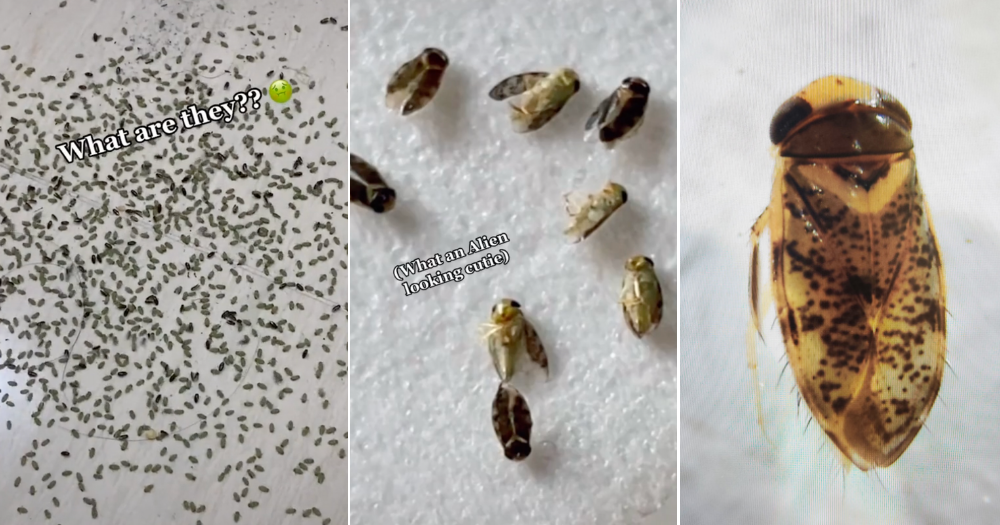Follow us on Telegram for the latest updates: https://t.me/mothershipsg
A resident living at Yishun Street 81 found hundreds of unidentifiable tiny insects in her living room recently.
The resident named Joy Oh began documenting the sudden appearance of these "alien babies" or "mystery bugs" in her home from June 1 on TikTok.
@joyyoddaTf are these & like where do they even come from? 🧐♬ Castaways - The Backyardigans
Mysterious bugs swarmed into the house
Speaking to Mothership, Oh who lives at the top floor recalled, "We just found them scattered across the floor of our living room. They seem to be able to flop and bounce around."
Although she is usually very terrified of insects, these looked pretty harmless.
Some of the insects appeared to be struggling on the floor so Oh decided to put them into a cup of water.
That led to her discovering that the insects can swim.
Oh and other TikTok users got pretty invested into these mysterious creatures subsequently.
Oh's first video about these insects garnered over half a million views, and viewers gave many suggestions on what the insects could be.
Weevils? Fleas? Rain bugs?
After an extensive Google search of all the suggestions, Oh found that the closest match of the mystery bug was that of an aquatic insect known as Micronecta.
When Oh posted on her Instagram story that the swarm appeared again on June 5, a friend of Oh's reached out to connect her with Leshon Lee, an undergraduate at the National University of Singapore.
@joyyoddaTHEY’RE BACK!! Apparently ✨MICRONECTA✨ isn’t even the proper name for this bug 😅♬ The Addams Family (Main Theme) - Original Soundtrack
He worked with Foo Maosheng, an entomologist and curator at the Lee Kong Chian Natural History Museum (LCKNHM), to unravel the mystery.
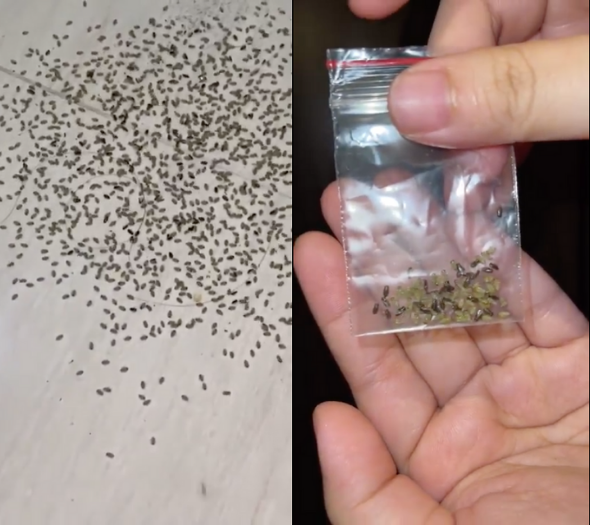 Oh collected and froze the samples in her freezer. Photos courtesy of Joy Oh.
Oh collected and froze the samples in her freezer. Photos courtesy of Joy Oh.
Harmless but not a typical insect swarm in S'pore
Lee sent Foo a photo and video of the insects, who concluded that the swarm was harmless and do not sting, bite, nor carry any diseases.
However, this was "not a typical insect swarm in Singapore, similar to ants or termites flying in after the rain, or like honey bees transiting to a new location", according to Foo, who asked for some samples.
Foo shared with Mothership that the museum collects samples from the public occasionally, "usually surrounding rare or unusual circumstances where the data provides new insights or is a new record or documentation."
"In this case, the collected samples act as a physical record of the swarm."
It was hard to see the chia seed-sized insect, but under magnification revealed that it had big alien-like eyes, spotted wings and long legs.
With the help of some high definition images taken by Lee, the species of the insect was identified as Micronecta haliploides.
 High-resolution macro photographs of the specimens. Photos courtesy of Leshon Lee.
High-resolution macro photographs of the specimens. Photos courtesy of Leshon Lee.
Also known as pygmy water boatmen
Pygmy water boatmen (Micronectidae), according to Foo, "tend to be found either in stagnant waters or slow-moving streams with aquatic vegetation."
"Some can even be found in temporary water bodies. They are actually commonly found in Singapore but easily overlooked due to their very small size of about 5 millimetres or less."
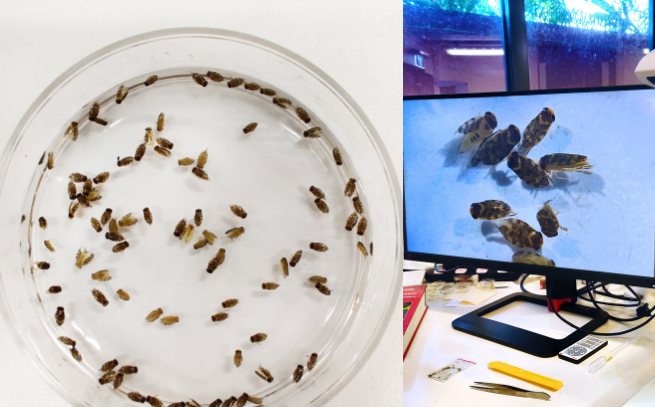 Photos courtesy of Foo Maosheng.
Photos courtesy of Foo Maosheng.
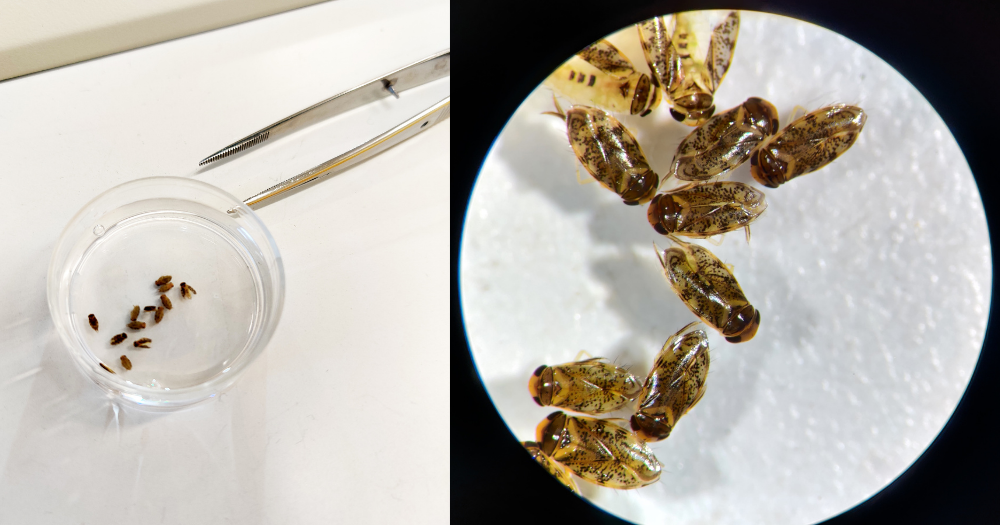 Photos courtesy of Foo Maosheng.
Photos courtesy of Foo Maosheng.
Ending up in a residential home
After understanding its biology, the researchers checked with Oh where she lives to further contextualise the occurrence.
Since she lives next to Lower Seletar Reservoir, Lee and Foo considered if the weather conditions played a role in the appearance of this swarm.
From their research, Lee and Foo found that "the swarming incident coincided with a period of transition from a wetter to a drier weather in May 2021."
"We hypothesised that the changes in environment, such as a water body is drying up, could have prompted the pygmy water boatmen to relocate to new and larger water bodies", Foo told Mothership.
They are known to be attracted to light sources, and could have ended up in Oh's house because of her ceiling lights.
However, Foo isn't quite sure why such a large number of them appeared.
"We can only speculate there may have been some drastic changes in the environment that supports a large increase in population of Micronecta haliploides."
This could be "an abundance of their food sources, algae or even tinier invertebrates, and the reduction in the numbers or even the lack of their natural predators."
Foo archived the samples in their specimen collection.
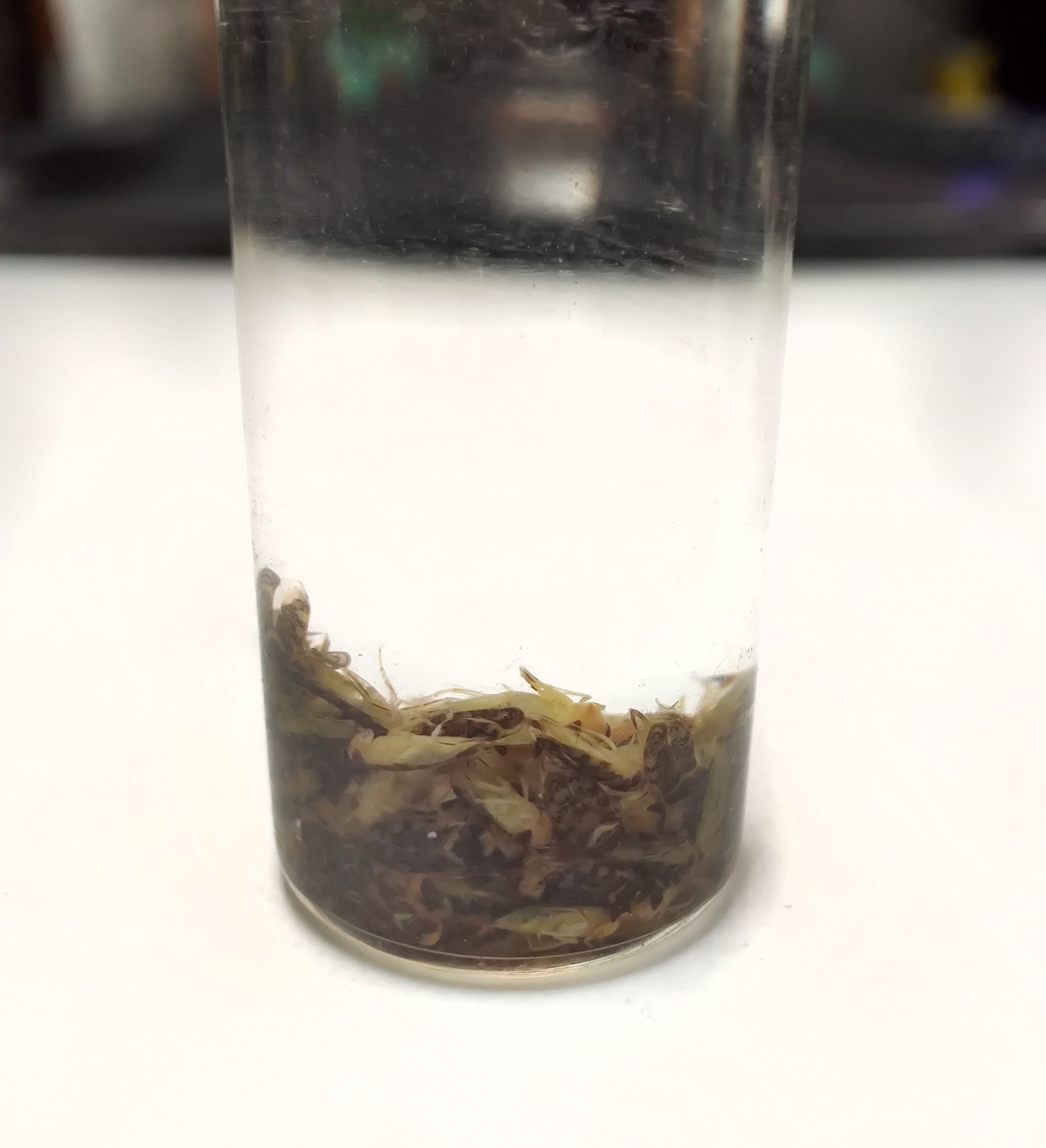 Specimens preserved ready for labelling and storage. Photo courtesy of Foo Maosheng.
Specimens preserved ready for labelling and storage. Photo courtesy of Foo Maosheng.
Importance of archiving Singapore's bugs
By collecting and archiving insects, Foo captures a snapshot of the environment and ecology at the time it was living.
Over time, it provides data on how the environment and ecosystem have changed.
Though often overlooked, insects form the base of the food chains for a host of predators, carrying out ecosystem services such as pollination and the recycling of nutrients, and are particularly sensitive to changes in the environment.
"Furthermore, insects are facing extinction rates far beyond other taxa—the rate of extinction for insects is about eight times faster than that of the other animals like birds and mammals on a global scale," Foo shared.
"It is vital that we document the biodiversity among insects before they disappear from the face of the earth. At the museum, we document the different species found in Singapore and their interactions through a publicly accessible online database—the Biodiversity of Singapore."
Since there was so much interest in her bug TikToks, Oh shared a final update to the saga with the help of Lee and Foo.
"Overall this experience has been so fun and unexpected," Oh tells Mothership, "These bugs could have easily just ended up in my house bin but now they’ve been documented and will leave their microscopic footprint in history."
Top images courtesy of Joy Oh
If you like what you read, follow us on Facebook, Instagram, Twitter and Telegram to get the latest updates.
